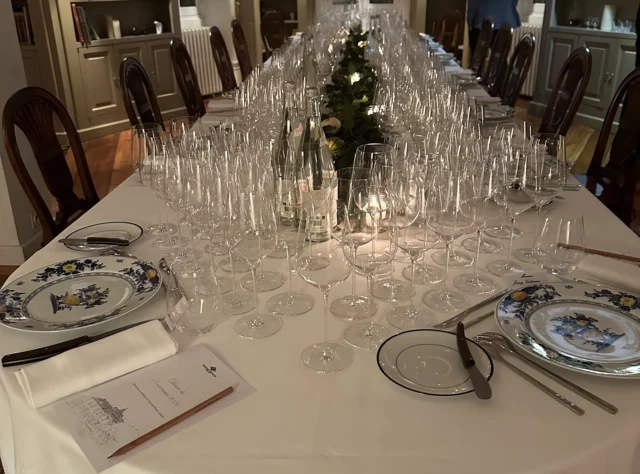Domaine Laroche
Updated Sep 2022
| Ha | |
|---|---|
| Chablis Grand Cru Les Blanchots | 4.35 |
| Chablis Grand Cru Les Bouguerots | 0.31 |
| Chablis Grand Cru Les Clos | 1.12 |
| Chablis 1er Cru Beauroys | 3.41 |
| Chablis 1er Cru Butteaux | 0.46 |
| Chablis 1er Cru Côte de Léchet | 0.23 |
| Chablis 1er Cru Fourchaumes | 0.92 |
| Chablis 1er Cru l’Homme Mort | 2.20* |
| Chablis 1er Cru Fourneaux | 0.58 |
| Chablis 1er Cru Montée de Tonnerre | 0.04 |
| Chablis 1er Cru Montmains | 1.00 |
| Chablis 1er Cru Vaillons | 2.17 |
| Chablis 1er Cru Vaudevey | 9.97 |
| Chablis Vieille Voye | 6.70* |
| Chablis ‘St Martin’ | 60.00* |
| Petit Chablis | 2.25 |
*The figures represent the total holdings of the vineyards but some of the l’Homme Mort will be included in the Fourchaumes bottling and the St Martin and Vieille Voye bottlings do not make use of the entire production.
Too dynamic a businessman to be content to stay put as a fifth- generation artisan vigneron, Michel Laroche soon expanded his operations from small beginnings to a domaine of over 100 hectares of Chablis, a boutique, hotel and restaurant in the town, and further wine operations in Languedoc, Stellenbosch and Chile – a significant empire that was merged with Maison Jeanjean in 2009 and now belongs to the Advini group. Michel Laroche himself departed to create the Domaine d’Henri with his family.
Headquarters for the Chablis business is in the marvellous 15th-century Obédiencerie, whose cellars today store the barrels used for the top cuvées, as well as the crypt which allegedly once housed the bones of St Martin of Tours. Next door is a fascinating survival: a vast 13th-century wooden wine press.
From 2011 to 2022 winemaking has been in the capable hands of Grégory Viennois. Alongside the significant domaine holdings there is a thriving négociant activity accounting by volume for more than half the wine produced. Their own grapes are picked mostly by machine, and cultured yeasts are used for vinification in a mix of tank, foudre and barrel depending on the cuvée.
The Chablis Vieille Voye cuvée was initiated in 2014, using 1ha of the 6.7ha plot, tucked in by Les Lys and Epinottes, the oldest vines dating back to 1902, the rest from the 1950s.It is picked by hand, then vinified and matured in foudre.
The flagship wine is the Chablis Grand Cru Blanchots, Réserve de l’Obédience, over and above the regular bottling of Blanchots. The team have a blind tasting of various components from this vineyard to decide what will make up the Réserve de l’Obédience. They discard excesses in any direction and construct the reserve from what is in the middle, effectively the essence of Blanchots, for longer ageing.





